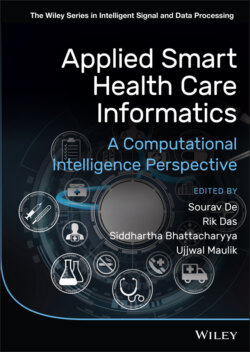Читать книгу Applied Smart Health Care Informatics - Группа авторов - Страница 18
1.5 IoT in Healthcare
ОглавлениеThe internet of things is revolutionizing health care (Keh et al., 2014; Santos et al., 2014; Amendola et al., 2014). As patients become more connected and generate more data, clinicians can identify and address their needs more efficiently than ever before. And with advances in data science and artificial intelligence, the potential for personalized preventative care and other innovations is limitless in health care. In addition, IoT wearable devices help monitor patients' conditions with sensors for body temperature, heart rate, blood pressure, breathing, sleep, and much more that will help doctors or physicians know the medical and lifestyle history of an individual as well as detect early signs of critical diseases. The IoT saves time as well as money and when both things are saved, a life could be saved. For instance, if a person becomes erratic in the middle of night or is alone and experiences symptoms like shortness of breath, heart palpitations, and a sudden change in heart rate or blood pressure, the IoT wearable device will sense the rapid change, record it electronically, and transmit the data to medical providers. Back at the hospital, doctors could already be monitoring and evaluating the data.The nearest clinic or hospital could then provide an ambulance, and before the patient reaches the hospital, all the necessary equipment could be prepared for quick action. In this way, a doctor can save the life of a patient because the IoT was communicating with the health care system and by providing real‐time monitoring to doctors, saved time, money, and effort. In this way, the IoT is transforming health care in a beneficial way (Lee, 2014; Yang et al., 2014; Diogo et al., 2014).
